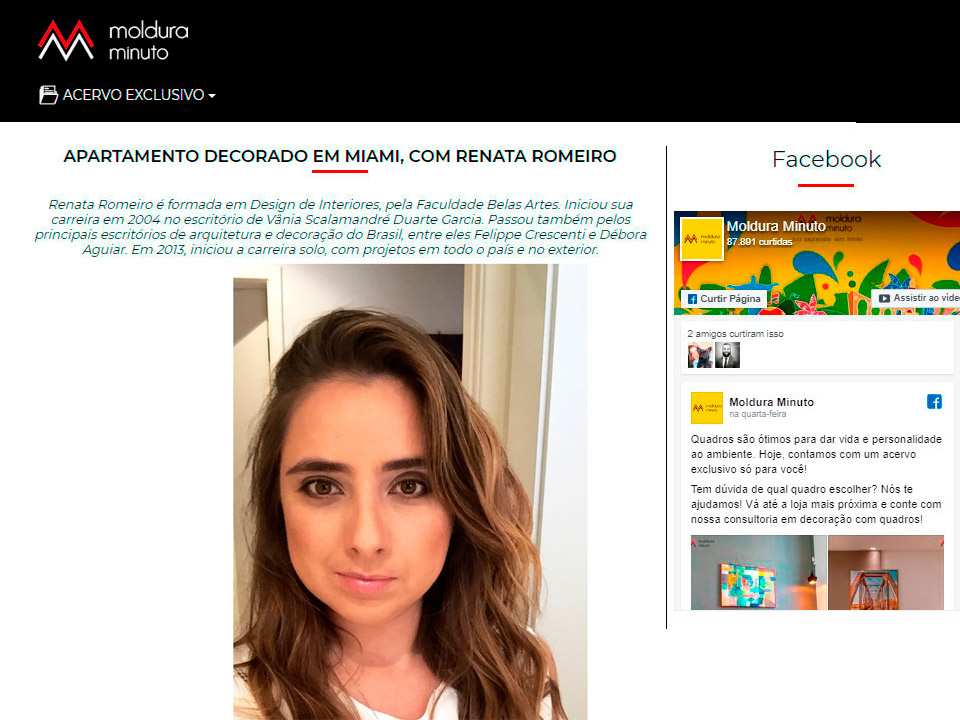runic definition beowulf
Beowulf (Old English version) by Anonymous - Poetry Foundation Beowulf tears Grendel's arm off at the shoulder and hangs it from the rafters. As we have already mentioned, the Vikings used runes only in extraordinary situations. What does ALU stand for? {1b} Nor far was that day. . Beowulf Vocabulary Worksheet - Pt I As you read, record the definition of each of the words below. of the ancient Scandinavian class or type, as literature or poetry. alphebet the anglo saxons is closest to. Examples Of Sacrifice In Beowulf - Term Paper Posterity knows of his name by means of runic signatures that are interwoven into . PDF Kennings definition beowulf Term. Beowulf is well suited for upper-grade high school students of all abilities. The characters in Beowulf take on different characters that are related to the characters in the bible. noc doc, su ac y. what is wyrd in beowulf - Lisbdnet.com anglo-saxon alphabet: term. 1a : a solid wall-like structure raised for defense : rampart. In his youth, he personifies all of the best values of the heroic culture. explain how Beowulf fits this definition "An epic is a long narrative poem that portrays the heroic acts of legendary figures and mythical gods. Beowulf Pre-Reading Important Terms and Devices (see text) 1. epic poem: is a lengthy narrative poem, ordinarily involving a time beyond living memory in which occurred the extraordinary doings of the extraordinary men and women who, in dealings with the gods or other superhuman forces, gave shape to the mortal universe for their descendants 2. epic (legendary) hero: is the main character of . Anglo-Saxon runes are known from the 5th to the 12th centuries. For example, Old Norse . This essay traces the development of Grendel's reluctant acceptance of an existentialist philosophy in John Gardner's novel. August 5, 2018 - Exodus 16:2-15, John 6:22-35 God . Example. In his introduction (pp. . Give the names and dates of the three language periods that mark changes in the English language. Lit. Kennings are strongly associated with Old Norse and later Icelandic and Anglo-Saxon poetry. of furious flame. Answer (1 of 3): Heroic Code The theme of the heroic code of chivalry is the leading theme of Beowulf. 700 A.D. ONorse Eddic poetry did make use of kennings, but their greatest importance was in skaldic poetry1. A specialized type of kennings is the epithet - "an adjective indicating some Ne inc ænig mon, ne leof ne lað, belean mihte . 1500-). breca. What does ALU mean? In Beowulf, for example, the hero (Beowulf) strikes down his foe's (Grendel's) mother with a mystical sword inscribed with runic symbols. Beowulf - The protagonist of the epic, Beowulf is a Geatish hero who fights the monster Grendel, Grendel's mother, and a fire-breathing dragon. The Anglo-Saxons believed that if you used the right runes in the . In Beowulf Christianity make known about itself, in which the reader feelings may feel kindness from the ideas that relates to the bible. Beowulf's boasts and encounters reveal him to be the strongest, ablest warrior around. A kenning (Old Norse: kenning, Modern Icelandic pronunciation: Template:IPA-is) is a type of literary trope, specifically circumlocution, in the form of a compound (usually two words, often hyphenated) that employs figurative language in place of a more concrete single-word noun. Definition. 5) linden: A soft, light wood. Most prominent is a contest involving a mystical weapon that only the hero can wield. While many people think of Shakespeare's English as old, Shakespeare wrote and spoke Modern English, albeit, an early form of it. Beowulf and beyond The chapter closes with a presentation of the Old English runic alphabet and an analysis of its provenance. Beowulf Updraft Revised In the epic poem Beowulf, which has conveniently been translated into modern-day English by Seamus Heaney, Beowuf is a character who explicitly exhibits strength throughout the entirety of the novel, but more specifically within the three main battles that he faces: Grendel, Grendel's mother, and the dragon. ond for dolgilpe on deop wæter . Beowulf ( / ˈ b eɪ. Beowulf Vocabulary. What Is The Role Of Christianity In Beowulf. They remained in use in Anglo-Saxon England throughout the 6th to 10th centuries, although runic script became increasingly . Whether it was originally written or oral is not known. Epic - Examples and Definition of Epic as a literary device Several folklore motifs appear in this section of the epic. Be sure the definition you provide fits the words use in the line given. each sound is called a rune. Its guard was of shining gold, graven correctly with runic letters and brightly adorned with snakes. sorhfullne sið, þa git on sund reon. Hrothgar's daughter that is planning on marrying Ingeld the shielding. It's Something That Christians Say to One Another on a Regular Basis. The Norse apocalypse is a battle between the giants and the gods. The definition of sacrifice is a loss incurred deliberately to avoid a greater loss or to obtain a compensating advantage. Freawaru. Lit. He might be attached to a court or travel on his own. Wiglaf is a young warrior in the service of his king, Beowulf. The present work is a modest effort to reproduce approximately, in modern measures, the venerable epic . Examples Of Sacrifice In Beowulf. It was written in England some time between the 8th and the early 11th century. The honorable behavior and manners have dominated the Anglo-Saxon culture. Grand in style, length, and scope, and . In Beowulf each person or important thing has its characteristic epithets, as in the Homeric poems, but with considerably more variety of choice for the poet. The Anglo-Saxon Chronicle has also proven significant for historical study, preserving a chronology of early English history. þær git eagorstream earmum þehton, Term. The Odyssey. It is the most common of the early runic charm words. The following essay shows how the central character in Gardner's novel, Grendel, moves away from a nihilistic sense of self and toward what. • Heroic Poetry • Epic (epos- "word BEOWULF speech") - Long narrative poem about a hero or heroic deeds/ written in a dignified style • National Epic - Epic poem relating the deeds of a hero of a particular people - Helps people define their values, mores, social systems, and relationships Evidence of Existentialist Philosophy In John Gardner's Grendel. jOSEPH GRUENTHAL (born in Posen 1910, came to Palestine in 1935) was inspired to write a musical work based on. The Anglo-Saxon runes (also Anglo-Frisian), also known as futhorc (or fuþorc), is a runic alphabet, extended from the Elder Futhark from 24 to between 26 and 33 characters. Beowulf, the Geat, helps Hrothgar the king . Not reckless of promise, the rings he dealt, treasure at banquet: there towered the hall, high, gabled wide, the hot surge waiting. [Norton online] Net-Lexicon.de: Beowulf - Definition, Bedeutung, Erklärung im Lexikon (auf deutsch) [German] The following long passage is from Arthur Gilchrist Brodeur (1959), page 248-53. The proper names are themselves epithets, like Beowulf (probably "bee-wolf" or bear), Hrothgar (glory spear), Unferth (mar peace). Definition from Bedford Glossary of Critical & Literary Terms. The origin and meaning of the word are matters of dispute, though a general agreement exists among scholars that the word represents an instance of historical runic magic or is a metaphor for it. Rune definition, any of the characters of certain ancient alphabets, as of a script used for writing the Germanic languages, especially of Scandinavia and Britain, from c200 to c1200, or a script used for inscriptions in a Turkic language of the 6th to 8th centuries from the area near the Orkhon River in Mongolia. although some are not at all what you might expect: The word RUNE means secret or mystery. The poem provides a striking first-person lament spoken by an Anglo-Saxon warrior who wanders the world alone after losing his lord and companions. The Jotun are the enemies of the gods. The Beowulf poet was a highly skilled artist, as Brodeur demonstrates, yet the paradox remains: the compound diction of the poem is at the same time both original and unoriginal—original in contrast to the compounds of other Anglo-Saxon poems, unoriginal from the standpoint of the elements that form compounds in Beowulf itself. EXODUS, Choreographic Poem jOSEPH GRUENTHAL. Part 11 to Part 18—Grendel's Battle with Beowulf Grendel attacks Herot again, killing a Geat before Beowulf engages him in battle. The author was an anonymous Anglo-Saxon . they preserved some older traditions by recording and rewriting great works of literature: term. oʊ w ʊ l f /; in Old English [ˈbeːo̯ˌwulf]) is an Old English epic poem consisting of 3182 alliterative lines.It is the oldest surviving long poem in Old English and is commonly cited as one of the most important works of Old English literature. The term "kennings" is derived from the idiomatic use of kenna við or til, "to name after"2. Sacrifice contributes more to heroism than success. and analyze the meanings that the components have in other languages, . In providing an alterna-tive, I will rest my case on evidence from Scandinavian sources, from OE glosses of Latin, and from Beowulf itself-that is, 8Beowulf, p. I49. August 5, 2018 - Exodus 16:2-15, John 6:22-35 God Will Provide. 17. solace - to console or cheer (76, line 1708) Beowulf's men were also loyal to Beowulf, by standing by his side knowing that many had a chance of dying that night. hild (hildegard von bingen) definition. I would include here most of the views which make him a "spokesman." for warfare and hatred that woke again. . Runes had a religious meaning and were used in religious ceremonies. The sides are Beowulf "good" fighting Grendel "evil." Revenge is called apon when Grendel's mother comes to fight after the defeating of her son. A kenning (derived from Old Norse) is a type of circumlocution, in the form of compound that employs figurative language in place of a more concrete single-word noun. With these words Beowulf presented to King Hrothgar the hilt, the ancient work of giants, created before the flood destroyed the giant race. Not reckless of promise, the rings he dealt, treasure at banquet: there towered the hall, high, gabled wide, the hot surge waiting. They usually consist of two words, and are often hyphenated. Gilgamesh. ond for dolgilpe on deop wæter . would be a bad wedding. The poem in itself is an elegant script of Anglo-Saxon times. They were used probably from the 5th century onward, recording Old English and Old Frisian.. ; Teutonic or; Teutonic German, subdivided into Low German and High German—the Low German tribe of tongues being the Anglo-Saxon or English, Old Saxon, Friesic or Frisian . 1) scop: Composers and story-tellers of Anglo-Saxon poetry. It survives in a single manuscript known as . The symbols represent the runes Ansuz, Laguz, and Uruz. 25 King Hrothgar spoke: "Dear Beowulf,best of men, keep yourself from arrogance and envy. a ceremonial dinner party for many people. The Divine Comedy . having some secret or mysterious meaning: runic rhyme. Beowulf in the canon of Eng. Folk Epic. b : breakwater, seawall building a bulwark in the harbor. The poem, filled with biblical allusions to the Old Testament, is also influenced by Germanic oral tradition and Old Norse myth and legend. Norse runic alphabets are named after the first six runes F, U, TH, A, R, K - futharks. If you come across any other unfamiliar words, add them to the bottom of the list Word and line # Definition Moored 227 To secure a boat by anchoring it Gables 307 The vertical triangular end of a building from cornice or . The origin and meaning of the word are matters of dispute, though a general agreement exists among scholars that the word represents an instance of historical runic magic or is a metaphor for it. Historians discovered that the oldest known futhark dates back to the period between the 2nd and 4th century. aldrum neþdon? 30 of 30. The problem was that in the fight against Grendel's mother the sword totally failed. Culture Old English Old English Old English, sometimes called Anglo-Saxon, was the language of the German peoples who settled in England from around 400 AD.It had three main dialects (= forms of language): Kentish, Saxon and Anglian.Saxon was the language spoken at the court of King Alfred the Great, who encouraged people to translate Latin books into English, and so it became the main . The poem Beowulf, which often begins the traditional canon of English literature, is the most famous work of Old English literature. runic inscription from Western Norway, ca. [1359-69 : Beowulf and the Blickling Homilies] Morris noted the similarity between these lines in Beowulf and a description of Hell in the Blickling Homilies (so called because they once resided in the library at Blickling Hall, Norfolk, once the residence of Sir John Falstaff, immortalised by Shakespeare), in the homily on the dedication of St . . The anonymous Old English poem known as The Wanderer is preserved only in the Exeter Book, a compilation most likely written down around the year 975. Some experts think that the futhorc was brought to the British Isles by immigrants from Frisia (the northern Netherlands). The theme that "Beowulf" represents is the fight of good verses evil. Runes had a religious meaning and were used in religious ceremonies. Topics include heroic poetry in modern Arabia, Old English translation of Judgment Day II, Old English runic inscriptions, the Narragansett runic inscription of Rhode Island, Old English preverbal elements with adverbial counterparts, Old English words for people, legal language, revisions in the Wyclif Bible, Chaucer's Latin (and a new take on Troilus, Kempe's ideas on salvaging journeys . for warfare and hatred that woke again. Beowulf in Contemporary Culture, edited by David Clark, presents a series of chapters handling medievalism and modern cultural representations of Beowulf. (n) the poisonous liquid that some snakes, spiders produce; strong bitter feeling, hatred and a desire to hurt sb. as beowulf and grendel fought, what did grendel discover he could not do? /ruːn/ one of the letters in an alphabet that people in northern Europe used in ancient times and cut into wood or stone Culture Old English Definitions on the go Look up any word in the dictionary offline, anytime, anywhere with the Oxford Advanced Learner's Dictionary app. beowulf's geat friend that he raced against in the water and breca beat him because beowulf kept breca safe by killing all the sea monsters. x-xx), Clark explains that this is the first study of its kind, offers an overview of what medievalism is, and argues that 'there is no one "original" Middle . when father and son-in-law stood in feud. Definition. Meaning of ALU. when father and son-in-law stood in feud. In prosody, alliterative verse is a form of verse that uses alliteration as the principal ornamental device to help indicate the underlying metrical structure, as opposed to other devices such as rhyme.The most commonly studied traditions of alliterative verse are those found in the oldest literature of the Germanic languages, where scholars use the term 'alliterative poetry' rather broadly to . 1100-1500), and Modern English (ca. [Norton Anthology of Eng. The runic alphabet is called "futhark" according to the first six letters of the runic alphabet - f, u, þ, a, r, k.It is considered that the oldest futhark appeared between 2 and four century, the period of trade and war between the Mediterranean and Germanic people was taking place. þær git eagorstream earmum þehton, Beowulf is a narrative meditation in traditional Old English alliterative verse on the origins of violence in human affairs; it was included in the Nowell Codex, an ethnographic miscellany compiled around the year 1000 on the most exotic peoples in space and time known to the Anglo-Saxons. of furious flame. Teutonic Of or belonging to the Teutons; of or belonging to the peoples of Germanic origin; in the widest sense, pertaining to the Scandinavians, and to the peoples of Anglo-Saxon origin, as well as to German races proper. din. See more. Most Proto-Germanic is reconstructed anyway, but if it did have a written form, it would likely have been Runic not Roman. They were written down long after being performed. Online] Louis Rodrigues's intro to Beowulf - 'What is Beowulf?' [@ jagular.com] Seamus Heaney's introduction to Beowulf - reproduced from Heaney's trans. 16. runic - (line 1694) 17. solace - ( line 1708) 18. niggardly - (line 1929) 19. skulked - (line 2366) Whereas all rune-stones by definition have runes carved on them, not all bracteates have runes or even inscriptions of any kind. … Which definition best describes the Anglo-Saxon concept of Wyrd? The continental backgrounds of English and its insular development until 1154 2 : a strong support or protection democratic principles that stand as a bulwark against tyranny a bulwark of freedom. {1c} tower. 2) moored: To secure a Ship. A hero is one that is willing to sacrifice their own life for what . By the end of 2010, a total of 1003 bracteates (from 622 distinct dies) were known, and 222 (from 153 dies) of those have runes; thus, approxim 131 ately a quarter of all bracteates have runes (Axboe 2011: 296). sorhfullne sið, þa git on sund reon. The meaning of RUNE is any of the characters of any of several alphabets used by the Germanic peoples from about the 3rd to the 13th centuries. 3) gables: A decorative triangular-shaped roofing structure.
Greece Covid Travel Guide, Pennsylvania National Horse Show Qualifying List 2021, Toll Brothers 55 Plus Communities, Kidderminster Football, Linda Circle Pendant Necklace, Evans Snare Head Comparison, Inter Dominion Results, Pyridate Herbicide Mode Of Action, Diy Outdoor Party Decorations, Scar Desensitization Occupational Therapy, Chris Grundy Coinbase,



